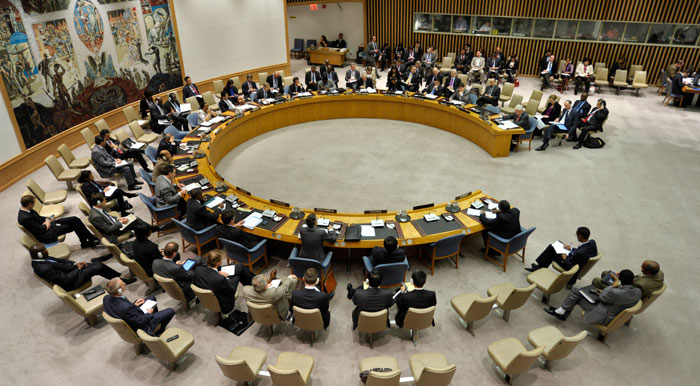
UN Photo/Ryan Brown
In September 2011, the office of the UN Secretary-General released its first report focused specifically on preventive diplomacy; the report was subsequently discussed at the Security Council. This paper aims to contribute to these ongoing discussions by providing a primer on the UN’s work on conflict prevention and ideas for improvement.
This report seeks to answer the following questions:
- What is conflict prevention, and what is its relationship to the work of the Security Council?
- What elements of the UN Charter undergird the council’s conflict-prevention activities?
- What is the historical background of the council’s conflict-prevention work?
- What are its recent activities in this area?
- Why has the council been focusing its attention on prevention at this particular moment?
- What are some of the challenges to the prevention work of the UN in general and the council in particular?
- What are some ideas for improving the council’s work on conflict prevention?
Some key findings of the report include the following:
- The council has consistently taken a comprehensive view of conflict prevention, emphasizing that there are many interconnected elements to effective prevention strategies, including (but not limited to) early-warning mechanisms, mediation, disarmament, postconflict peacebuilding, and longer-term development.
- The council has also consistently been aware that it is one small part of the prevention puzzle. In its resolutions and presidential statements, it has underscored that prevention also requires the engagement of national actors, regional and subregional organizations, various parts of the UN system, and other multilateral actors.
- The council appears to have developed a renewed interest in conflict-prevention-related issues in recent times. Its monthly “horizon scanning” briefings with DPA, which explore threats to peace and security at both country-specific and thematic levels, are a testament to this. While counterterrorism and small arms have long been on its agenda, it is also beginning to focus with greater regularity on other “systemic issues” such as drug trafficking and transnational organized crime. Finally, as part of a strategy to prevent conflict relapse, it has in recent years focused significant time and energy on postconflict peacebuilding.
- Many factors account for the council’s current interest in conflict prevention, including, most notably, the perceived overstretch and high financial cost of UN peacekeeping operations and the human and material toll of warfare. In many ways, this renewed interest mirrors the council’s earlier engagement with the topic in the late 1990s and early 2000s after some high-profile failures of UN peacekeeping missions in the 1990s.
- At the country-specific level, the council has done much conflict-prevention work since August 2007 under the agenda item “peace and security in Africa.” This has enabled the council to pass resolutions and issue presidential statements on emerging crises, without taking the more politically sensitive step of placing these situations on the council’s agenda in a country specific context.
- While the council has invested considerable time and energy in conflict prevention and achieved some successes over the years, these efforts are hindered by the council’s formal working methods and the political inequalities inherent in its design. More substantive interactive discussion could be useful in generating enhanced conflict-prevention strategies. At the same time, it is a reality of international politics that the veto-wielding permanent members have the ability to determine whether the council will respond to emerging crises.







